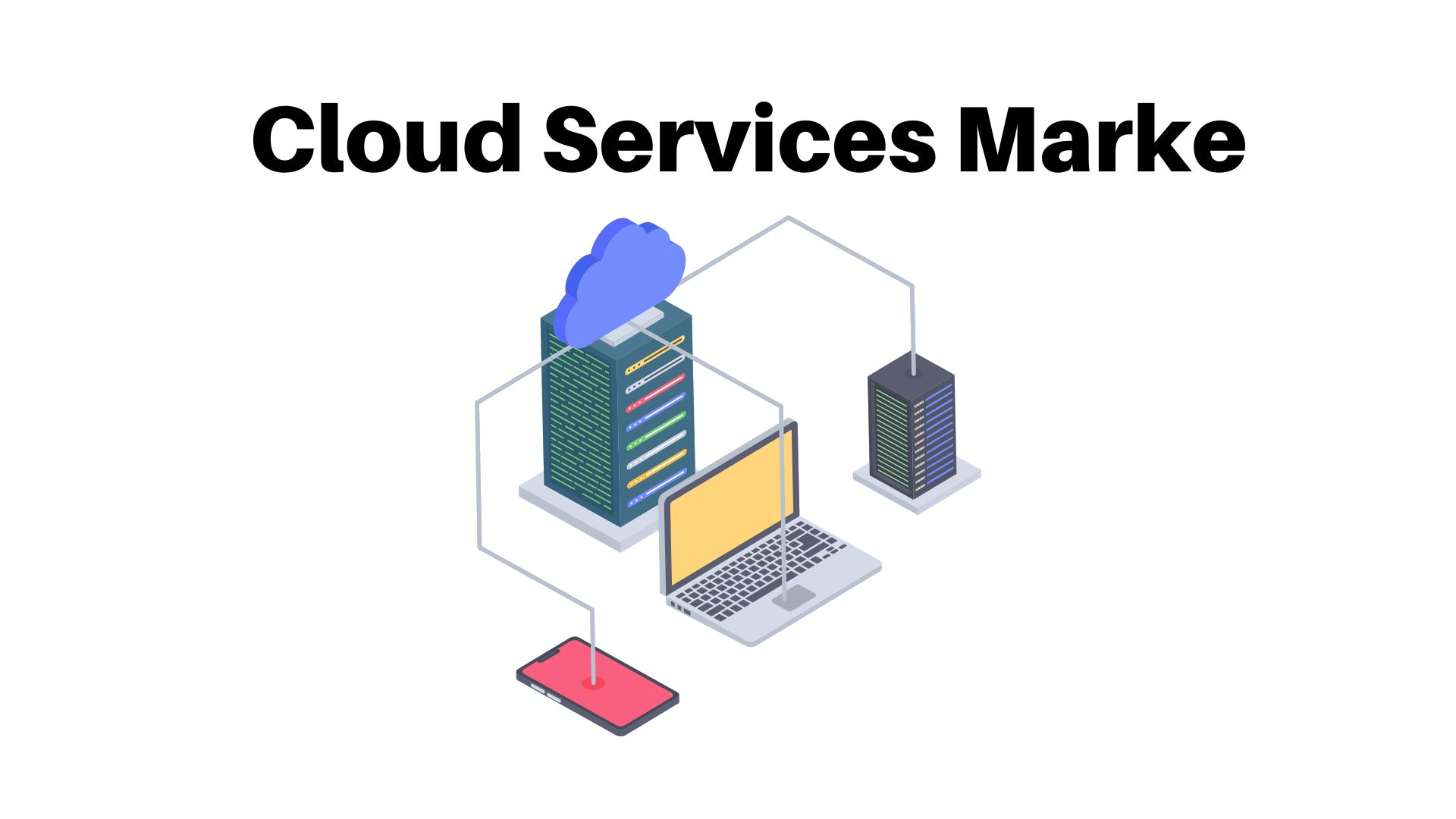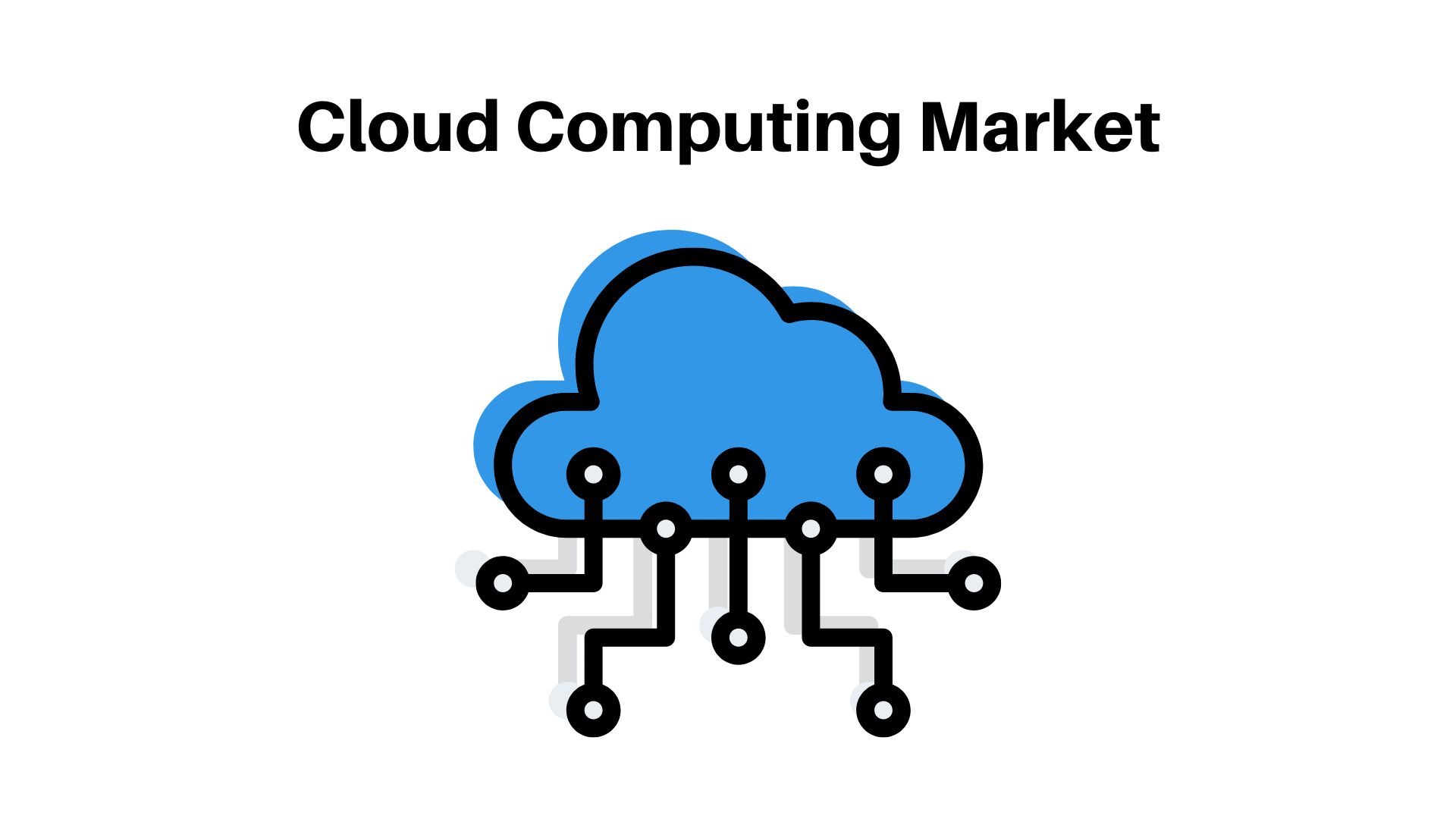Cloud Services Market to Reach USD 1950.37 Billion by 2032, Says Market.us Research Study

Page Contents
Cloud Services Market Overview
The cloud services market is a rapidly developing industry that provides on-demand computing resources such as storage, processing power, software, and applications over the internet. Cloud services are delivered through a network of remote servers hosted by leading cloud services providers like Amazon Web Services, Microsoft Azure, Google Cloud, or IBM Cloud.
Over the past several years, the cloud services market has experienced phenomenal growth due to factors such as the increasing adoption of cloud-based technologies by businesses of all sizes, the need for greater agility and scalability, as well as rising demands for cost-effective solutions.
Market.us recently published a report forecasting the global cloud services market to grow from USD 325.69 billion in 2022 to USD 1950.37 billion by 2032, at an annual growth rate (CAGR) of 19.60% during the forecast period.
The major drivers behind this growth include increasing demand for Software-as-a-Service (SaaS), rising adoption of cloud computing among small and medium-sized enterprises (SMEs), as well as growing demands for disaster recovery and business continuity solutions.
The cloud services market is segmented into several categories based on the type of service provided, including Infrastructure-as-a-Service (IaaS), Platform-as-a-Service (PaaS), and Software-as-a-Service (SaaS). Over the next few years, SaaS is expected to account for a majority share in this space due to the increasing adoption of cloud-based business applications as well as the demand for cost-effective yet scalable solutions.

Key Takeaways
- The cloud services market is a rapidly developing industry that offers on-demand computing resources like storage, processing power, software applications, and other resources over the internet.
- Over the last several years, the market for cloud services has experienced phenomenal growth due to factors such as increased adoption of cloud-based technologies by businesses of all sizes, the need for greater agility and scalability, as well as an ever-increasing need for cost-effective solutions.
- Market.us' report projects the global cloud services market to increase from USD 325.69 billion in 2022 to USD 1950.37 billion by 2032, growing at a compound annual growth rate (CAGR) of 19.60% during the forecast period.
- The major drivers of growth in the cloud services market include increasing demand for Software-as-a-Service (SaaS), growing cloud computing adoption by small and medium-sized enterprises (SMEs), as well an increasing need for disaster recovery and business continuity solutions.
- The cloud services market is divided into distinct categories based on the type of service provided, such as Infrastructure-as-a-Service (IaaS), Platform-as-a-Service (PaaS), and Software-as-a-Service (SaaS).
- SaaS is expected to dominate the cloud services market in the foreseeable future, due to the increasing adoption of cloud-based business applications and the demand for cost-effective yet scalable solutions.
Request For Sample Report: https://market.us/report/cloud-services-market/request-sample/
Regional Snapshot
- North America: The North American cloud services market is the largest in the world, driven by major providers such as Amazon Web Services, Microsoft Azure, and Google Cloud. With high adoption rates in this mature region and increasing demand for cloud solutions due to their agility, scalability, and cost-effectiveness, this region has seen impressive growth over recent years.
- Europe: The European cloud services market is well-established with high adoption rates due to the need for cost-effective solutions and regulatory compliance requirements. There has been an emphasis on data privacy and security in recent years, leading to the growth of cloud service providers who specialize in secure, compliant cloud solutions.
- Asia-Pacific: The Asia-Pacific cloud services market is experiencing rapid growth due to the increasing adoption of cloud technologies by businesses of all sizes. The region boasts a large and expanding SME sector, and demand for cloud solutions is being fuelled by cost-effective solutions as well as the desire to promote innovation and competitiveness.
- Latin America: The Latin American cloud services market is relatively young, with lower adoption rates than other regions. Nonetheless, the market is growing rapidly due to increasing access to cloud services and demand for cost-effective solutions.
- Middle East and Africa: The Middle East and Africa cloud services market is relatively young, with relatively low adoption rates compared to other regions. Nonetheless, it's growing rapidly due to the increased accessibility of cloud services as well as the demand for cost-effective solutions.
Drivers
- Cost-Effectiveness: Cloud services offer an economical solution for businesses of all sizes, as they remove the need to invest in costly hardware, software, and IT infrastructure. Instead, businesses can access computing resources on demand and pay only for what they use – drastically cutting their overall IT expenditures.
- Scalability: Cloud services give businesses the power to quickly and easily scale their computing resources up or down according to their requirements, helping them adapt quickly to changes in demand without investing in costly hardware and software that may become outdated quickly. This makes it possible for companies to respond quickly to changes in demand without needing to invest in costly equipment that won't remain relevant long.
- Agility: Cloud services enable businesses to be more agile and adaptable, as they can access computing resources remotely with an internet connection. This enables firms to collaborate more efficiently and adjust quickly according to market changes.
- Innovation: Cloud services give businesses access to cutting-edge technologies and tools they may not otherwise have had access to. This empowers companies to innovate and create new products and services, increasing growth and competitiveness in the process.
- Disaster Recovery and Business Continuity: Cloud services offer businesses reliable disaster recovery and business continuity solutions since data is stored in secure, redundant locations. This enables businesses to quickly recover from any disruptions and continue operating normally.
- Software-as-a-Service (SaaS): The growing adoption of the SaaS model is propelling growth in the cloud services market, as businesses increasingly rely on cloud-based applications to boost productivity and efficiency.
Restraints
- Security and Privacy Issues: Security and privacy are major challenges for the cloud services market, as businesses are reluctant to store sensitive data there due to potential data breaches or cyber-attacks. Businesses also worry about losing control over their data as well as whether or not they will comply with data protection regulations.
- Network Connectivity: Reliability and availability of network connectivity are paramount for cloud services. Businesses require a fast internet connection to access these offerings, and disruptions in connectivity can negatively impact the performance and uptime of cloud applications.
- Lack of Skilled Personnel: The adoption of cloud services requires skilled personnel to manage and optimize the cloud environment. A shortage of experienced personnel may slow down adoption rates, particularly among small and medium-sized businesses.
- Legacy Systems: Legacy systems and applications may present a barrier to cloud adoption, as they may not be compatible with cloud environments. Migrating legacy systems to the cloud is typically time-consuming and costly; businesses may need to make significant adjustments to their current processes and workflows in order to successfully transition over.
- Data Sovereignty: Data sovereignty refers to the legal requirements that data must be stored in specific geographic locations or under specific legal jurisdictions. This poses a challenge for businesses operating across multiple countries, as they must adhere to multiple data sovereignty regulations.
Opportunities
- Edge Computing: Edge computing is a novel paradigm that enables businesses to process data and performs computing tasks closer to the edge of the network, rather than in central data centers. This reduces latency and enhances performance for real-time applications. The cloud services market has an opportunity to develop edge computing solutions that can be deployed at this edge location.
- Internet of Things (IoT): As more IoT devices and sensors are deployed, massive amounts of data must be processed and analyzed. Cloud services offer the scalability and processing power required for managing this massive IoT collection, creating an opportunity for cloud service providers to develop innovative IoT solutions.
- Artificial Intelligence (AI) and Machine Learning (ML): AI and ML are revolutionizing many industries, such as healthcare, finance, and manufacturing. Cloud services can offer the computing power necessary for training and deploying AI/ML models – creating an opportunity for cloud service providers to develop innovative AI/ML solutions.
- Hybrid Cloud: Hybrid cloud is a deployment model that integrates public and private cloud services, giving businesses more flexibility and control over their data and applications. Cloud service providers can tailor hybrid cloud solutions according to each business's unique requirements.
- Industry-Specific Cloud Solutions: Businesses across various industries have specific requirements and demands for cloud solutions. Cloud service providers can develop industry-specific cloud solutions tailored to these needs, such as healthcare, finance, and retail.
Challenges
- Security: Security should be a top priority for businesses storing sensitive data in the cloud. Cloud service providers must invest in robust security measures to safeguard their customers' information from cyber attacks and breaches.
- Interoperability: Interoperability refers to the capacity for different cloud platforms and services to work together seamlessly. Businesses utilizing multiple providers may experience difficulty integrating their disparate systems and data sources.
- Vendor Lock-In: Vendor lock-in occurs when businesses become dependent on one cloud service provider and find it costly and complex to switch due to the cost and difficulty of migration. This limits a business's flexibility and capacity to adjust according to changing market conditions.
- Cost Management: While cloud services can be cost-effective in the long run, businesses may face difficulties managing their cloud expenses and making sure they get value for their money.
- Talent Shortage: The rapid expansion of the cloud services market has created a shortage of skilled personnel, making it challenging for businesses to locate and retain experienced individuals to manage their cloud environments.
- Compliance and Regulations: Businesses that store sensitive data in the cloud must abide by a variety of regulations and data protection laws. Cloud service providers must guarantee their services adhere to these requirements, giving customers the necessary tools for managing compliance.
Grow your profit margin with Market.us Get this Report
Recent Developments
- Hybrid Cloud Solutions Are Becoming More Popular: Businesses are increasingly turning to hybrid cloud solutions, which enable them to utilize both public and private clouds for specific business requirements. This approach offers companies the advantages of both types of clouds – scalability, security, and cost efficiency – at no extra cost.
- Serverless computing's growing popularity: Serverless computing, which enables developers to write code without worrying about the underlying infrastructure, is becoming more commonplace. This approach can reduce costs and enhance scalability by automatically scaling up or down based on demand.
- Accent on Edge Computing: Edge computing involves processing data at the edge of the network, closer to where it's generated. This approach can reduce latency and enhance performance for applications that require real-time processing such as IoT devices or autonomous vehicles.
- Increased Focus on Cybersecurity: With the rise of cyber threats and data breaches, cybersecurity has become a top priority for cloud service providers and their customers. Companies are investing more heavily in security measures such as encryption, access control, and threat detection.
- Continued Growth of Cloud Marketplaces: Cloud marketplaces, which enable customers to easily search and purchase cloud services from multiple vendors, continue their upward trajectory. These marketplaces offer a vast selection of solutions and services across various cloud verticals – from infrastructure to software applications.
Key Market Segments
Type
- Public Cloud
- Private Cloud
- Hybrid Cloud
- Community Cloud
Application
- Government
- Private organizations
- Academics and education
- Banking, Financial Services, and Insurance
- Health Care
- Supply chain management
Key Market Players
- Amazon
- Akamai
- Cisco Systems
- IBM
- HP
- Dell
- Microsoft
- VMware
- Yahoo
Nature Insights
According to Market.us Research's July 2022 report, the global cloud services market is projected to reach USD 1950.37 billion by 2032 at a compound annual growth rate (CAGR) of 19.60% from 2022-2032. Additionally, businesses are turning towards cloud solutions for remote work opportunities, business continuity management, and cost reduction purposes; all with an aim towards maximizing profitability while decreasing risks.
Amazon Web Services (AWS), Microsoft Azure, and Google Cloud Platform (GCP) remain the dominant players in the cloud services market. However, smaller players such as Alibaba Cloud, IBM Cloud, and Oracle Cloud are growing rapidly and expanding their services to compete with these big three.
Report Scope
| Report Attribute | Details |
| The market size value in 2022 | USD 352.69 Bn |
| Revenue forecast by 2032 | USD 1950.37 Bn |
| Growth Rate | CAGR Of 19.60% |
| Regions Covered | North America, Europe, Asia Pacific, Latin America, and Middle East & Africa, and the Rest of the World |
| Historical Years | 2017-2022 |
| Base Year | 2022 |
| Estimated Year | 2023 |
| Short-Term Projection Year | 2028 |
| Long-Term Projected Year | 2032 |
Frequently Asked Questions
Q: What are cloud services?
Cloud services are an online computing platform that enables users to access various computing resources like storage, servers, applications, and databases. These are managed and operated by cloud service providers who operate and maintain the infrastructure supporting them.
Q; What are the advantages of cloud services?
Cloud computing offers businesses and individuals numerous advantages, such as scalability, flexibility, cost savings, accessibility, and security. By using cloud computing resources businesses don't need to invest in their own IT infrastructure which could prove expensive or time-consuming to maintain.
Q: What are the different types of cloud services?
There are three primary categories of cloud services: Infrastructure as a Service (IaaS), Platform as a Service (PaaS), and Software as a Service (SaaS). IaaS provides users with virtualized computing resources such as servers, storage, and networking; PaaS offers developers and testers an environment to develop, test and deploy applications; SaaS provides access to software applications hosted and managed by a cloud service provider.
Q: How is the cloud services market expected to develop in the future?
The cloud services market is expected to experience continued expansion due to increasing demand from businesses of all sizes and industries. Furthermore, emerging technologies like edge computing, AI, and machine learning will further enhance cloud capabilities. Various reports predict that this market could reach a value of several hundred billion dollars by the end of this decade.
The team behind market.us, marketresearch.biz, market.biz and more. Our purpose is to keep our customers ahead of the game with regard to the markets. They may fluctuate up or down, but we will help you to stay ahead of the curve in these market fluctuations. Our consistent growth and ability to deliver in-depth analyses and market insight has engaged genuine market players. They have faith in us to offer the data and information they require to make balanced and decisive marketing decisions.



